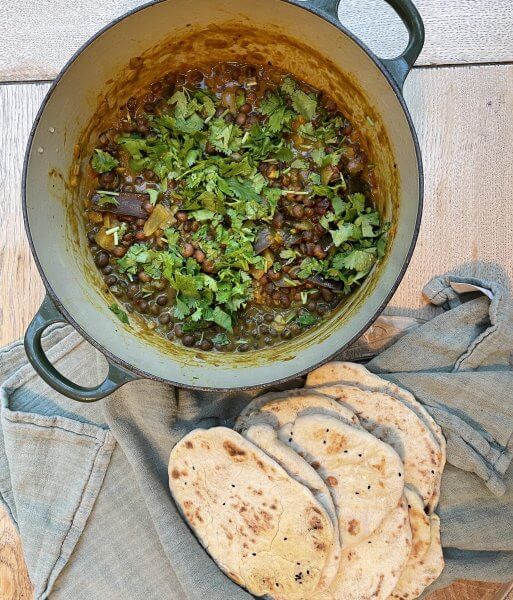It is incredibly fascinating how different types of pulses give such contrasting tastes and textures. Growing up in an Indian household, I have eaten so many of them over the years, and I know the subtle differences between them all. Do I have a favourite? No, because food gives us so many experiences, memories and feelings, and appeals to the senses but it also has different effects depending on so many things-our mood, the time of day, the season, the setting, and also who has made it. I often write about pulses, and offer many recipes for them, because each region of India has its own way to cooking them, its own particular favourite spice combinations and so on. If I were to ask my mother and several of her close friends, my ‘aunties’ to cook pigeon peas, each version would taste different, but more importantly, it would be a taste that embodied them. So, the list of recipes for wonderful beans and dals, in all their various guises, is endless!!

This Gujarati version of whole toovar is a delicious, creamy and satisfying meal, which follows the sensible principles of Ayurvedic nutrition. This means that it is a ‘complete’ meal that will offer all 6 tastes. It works well with homemade flatbreads or thick rotis, or of course freshly cooked basmati rice. It has a slightly sweet and sour taste due to a fine balance of jaggery and tamarind, which is typical to Gujarati cuisine. I am giving you the tinned pigeon pea version here (it will probably say ‘gungo peas’ on the tin, which is the Caribbean name for them) because fresh pigeon peas are not so easily available in the UK. However, if you do happen to find fresh ones in a South Asian grocers shop, then of course, it’s always preferable.
Ingredients to serve 4:
2 tins pigeon (gungo) peas, drained
2 tbsp olive oil
1 tsp black mustard seeds
1 tsp caraway seeds
A good pinch asafoetida
1 tsp grated fresh ginger
2 fat garlic cloves, crushed
1 small green chilli, finely chopped
Half tsp turmeric
1 tsp ground cumin
1 tsp ground coriander
A pinch of mild chilli powder (optional)
1 tbsp grated jaggery
1 tbsp tamarind paste
1 tbsp gram (chickpea) flour, mixed with hot water to a smooth, runny paste
Salt to taste
A handful of fresh coriander leaves
Method:
Heat the oil in a wide based pan, and once hot, add the mustard and caraway seeds along with the asafoetida. Once the seeds start to fizzle, add the ginger, garlic and green chilli, and mix well. Now add the pigeon peas along with around a teaspoon of salt, and the turmeric, cumin and coriander powders, and chilli powder, if using. Mix everything well again; now add the gram flour paste, the jaggery and tamarind, and give it another good stir before adding just boiled water to about two inches above the peas. Put a lid on with a small gap at one end, and cook on a medium heat for 10 minutes or so. Keep an eye on it, and add a little more water if it looks too thick. Now try a little, and adjust the tamarind and jaggery, as well as the salt if you want to. You are looking for a subtle sweet/sour taste.
Scatter the coriander leaves on top to serve.
